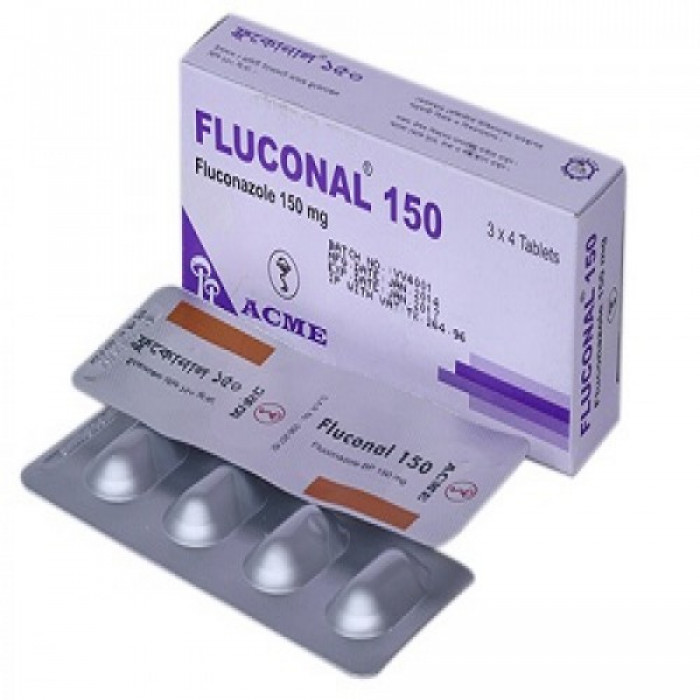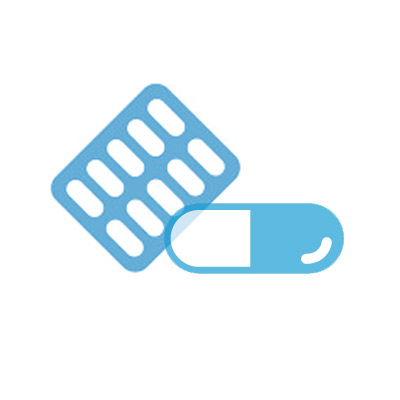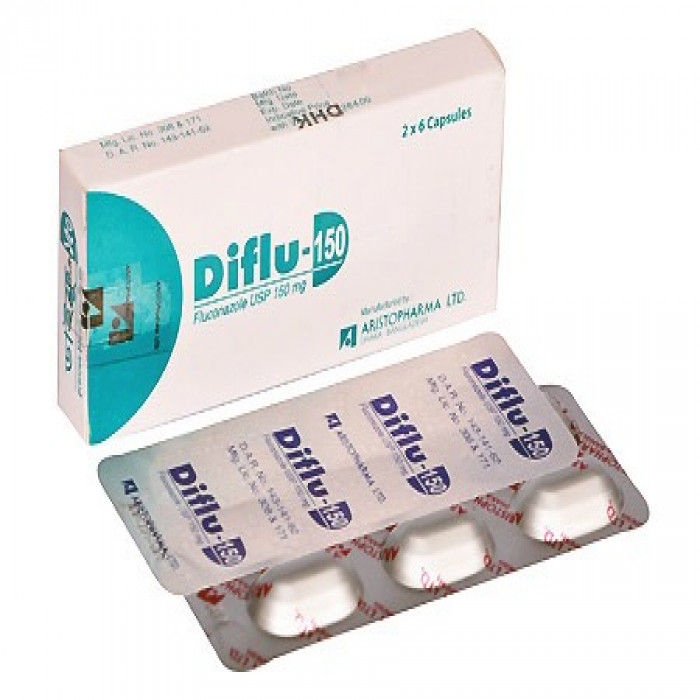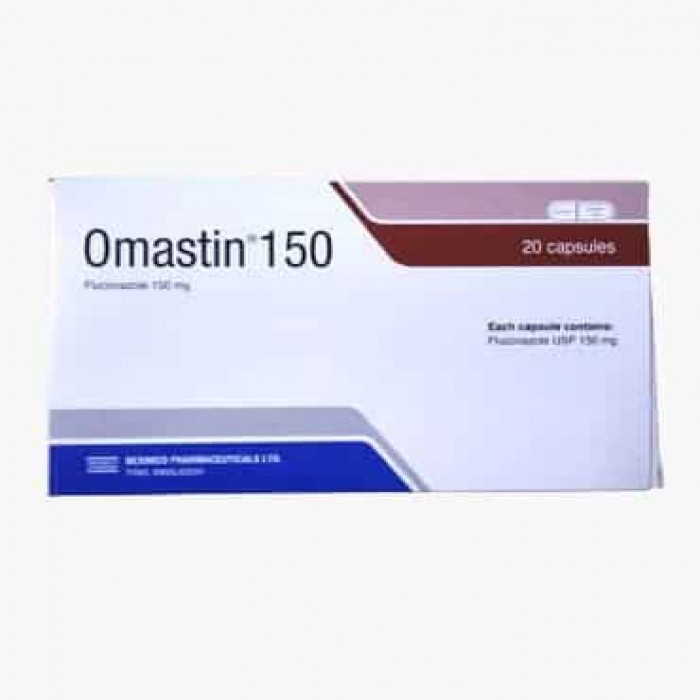
✔ 100% Authentic Product
👁️ Currently Viewing 2174
Fluconal 150mg 4pcs
Capsule Manufacturer/Distributor: Acme Laboratories Ltd. Generic Name: Fluconazole 150 mg Capsule
Discount
Price: ৳ 83
MRP:
৳
88.6
6%
Off

100% Genuine Products, Guaranteed

Safe & Secure Payments, Always

Fast, Secure & Efficient Delivery

Proper Packaging
 Cash on Delivery - All over Bangladesh
Cash on Delivery - All over Bangladesh Regular Delivery - 12-24 Hours, Dhaka City* Charge Tk.39-59
Regular Delivery - 12-24 Hours, Dhaka City* Charge Tk.39-59 Regular Delivery - 24-48 Hours, Other Cities* Charge Tk.99-110
Regular Delivery - 24-48 Hours, Other Cities* Charge Tk.99-110
 ফ্রি ডেলিভারিঃ - ৯৯৯ টাকা+ অর্ডারে, ঢাকা
শহরে
ফ্রি ডেলিভারিঃ - ৯৯৯ টাকা+ অর্ডারে, ঢাকা
শহরে ফ্রি ডেলিভারিঃ - ২৯৯৯ টাকা+ অর্ডারে, ঢাকার
বাহিরে
ফ্রি ডেলিভারিঃ - ২৯৯৯ টাকা+ অর্ডারে, ঢাকার
বাহিরে
100% Genuine Products, Guaranteed
Safe & Secure Payments, Always
Fast, Secure & Efficient Delivery
Proper Packaging
 Cash on Delivery - All over Bangladesh
Cash on Delivery - All over Bangladesh Regular Delivery - 12-24 Hours, Dhaka City* Charge Tk.39-59
Regular Delivery - 12-24 Hours, Dhaka City* Charge Tk.39-59 Regular Delivery - 24-48 Hours, Other Cities* Charge Tk.99-110
Regular Delivery - 24-48 Hours, Other Cities* Charge Tk.99-110 ফ্রি ডেলিভারিঃ - ৯৯৯ টাকা+ অর্ডারে, ঢাকা
শহরে
ফ্রি ডেলিভারিঃ - ৯৯৯ টাকা+ অর্ডারে, ঢাকা
শহরে ফ্রি ডেলিভারিঃ - ২৯৯৯ টাকা+ অর্ডারে, ঢাকার
বাহিরে
ফ্রি ডেলিভারিঃ - ২৯৯৯ টাকা+ অর্ডারে, ঢাকার
বাহিরে
✅ Description:
Indications
Fluconazole is demonstrated for the treatment of vaginal candidiasis, oropharyngeal & esophageal candidiasis and cryptococcal meningitis. It is additionally successful for the treatment of urinary tract disease caused by candida, peritonitis and systemic candida diseases (counting candidemia, spread candidiasis and pneumonia).
Pharmacology
Fluconazole is a triazole antifungal agent. It is a potent inhibitor of fungal cytochrome P-450 dependent enzymes. Cytochrome P-450 enzyme system is essential component of fungal cell membrane which is responsible for the synthesis of ergosterol.
Administration & Dosage
Adult (oral)-
Vaginal candidiasis: 150 mg as a single dose.
Oropharyngeal candidiasis: 200 mg on the first day, followed by 100 mg once daily. Clinical evidence of this infection generally resolves within several days, but treatment should be continued for at least 2 weeks to decrease the likelihood of relapse.
Esophageal candidiasis: 200 mg on the first day, followed by 100 mg once daily. Doses up to 400 mg/day may be used. Patients should be treated for a minimum of three weeks and for at least two weeks following resolution of symptoms.
Systemic candida infections: Optimal therapeutic dosage and duration of therapy have not been established. Sometimes, doses of up to 400 mg daily have been used.
Urinary tract infections caused by candida and peritonitis: 50-200 mg daily have been used.
Cryptococcal meningitis: 400 mg on the first day, followed by 200 mg once daily.
Prophylaxis in patients undergoing bone marrow transplantation: 400 mg once daily.
Child (oral):
Doses of 3-6 mg/kg daily have been used. Doses up to 12 mg/kg is recommended.Intravenous-
Adult: Invasive candidal infections including candidaemia and disseminated candidiasis and cryptococcal infections including meningitis, by IV, 400 mg initially then 200 mg daily, increased if necessary to 400 mg daily, treatment continued according to response (at least 6-8 weeks for cryptococcal meningitis)
Child: 6-12 mg/kg daily (every 72 hours in neonate up to 2 weeks old, every 48 hours in neonate 2-4 weeks old); maximum 400 mg daily. Prevention of relapse of cryptococcal meningitis, by IV, 100-200 mg daily.
Interaction
Concomitant use of cyclosporin or phenytoin with Fluconazole increases the plasma level of cyclosporin or phenytoin. Concomitant use of Fluconazole & warfarin prolongs the prothrombin time. Rifampicin level is decreased when used with Fluconazole.
Contraindications
Fluconazole should not be used in patients with known hypersensitivity to Fluconazole or to related triazole compounds.
Side Effects
Fluconazole is well tolerated. Most common side effects of using Fluconazole includes nausea, vomiting, abdominal pain, diarrhoea, headache and skin rash.
Pregnancy & Lactation
US FDA Pregnancy category of Fluconazole is C. So, Fluconazole should be avoided in pregnancy and lactation unless the potential benefits to the other outweigh the possible risks to the fetus.
Precautions & Warnings
Fluconazole should be administered with caution to patients having proarrhythmic conditions.
Storage Conditions
Protect from light and moisture by storing below 30°C. Keep the medicine out of children's reach.
⚠️Disclaimer:
At ePharma, we’re committed to providing accurate and accessible health information. However, all content is intended for informational purposes only and should not replace medical advice from a qualified physician. Please consult your healthcare provider for personalized guidance. We aim to support, not substitute, the doctor-patient relationship.









